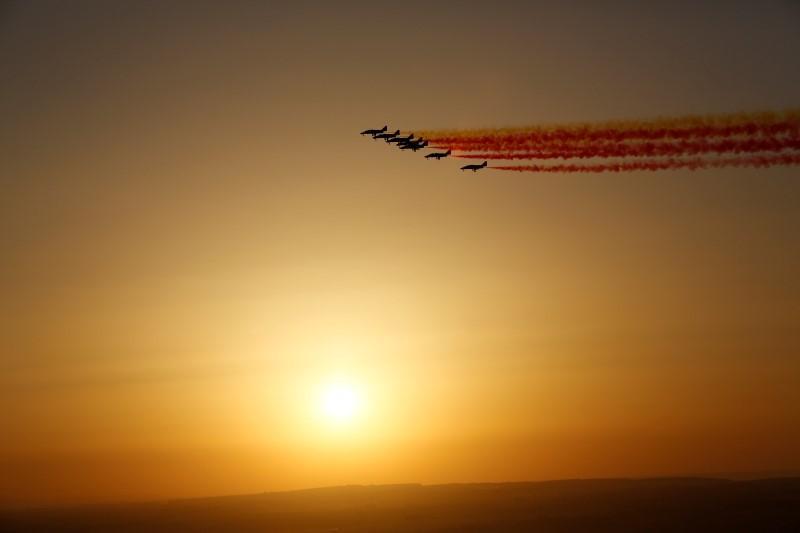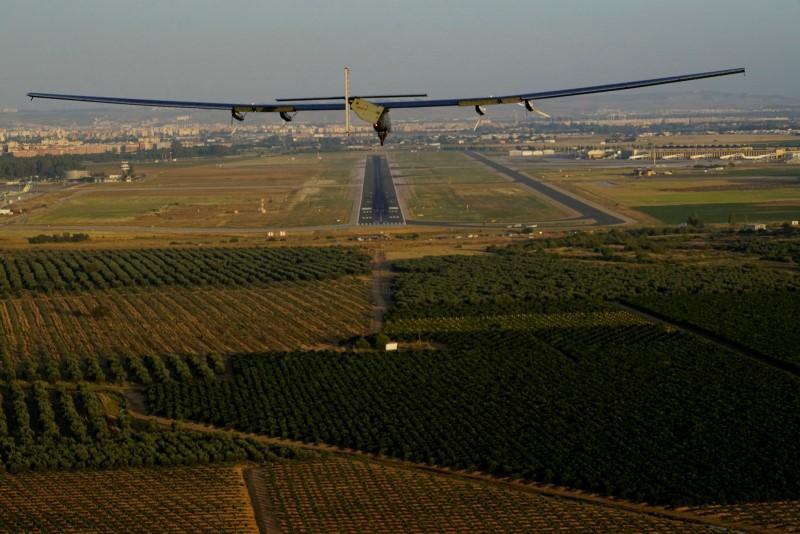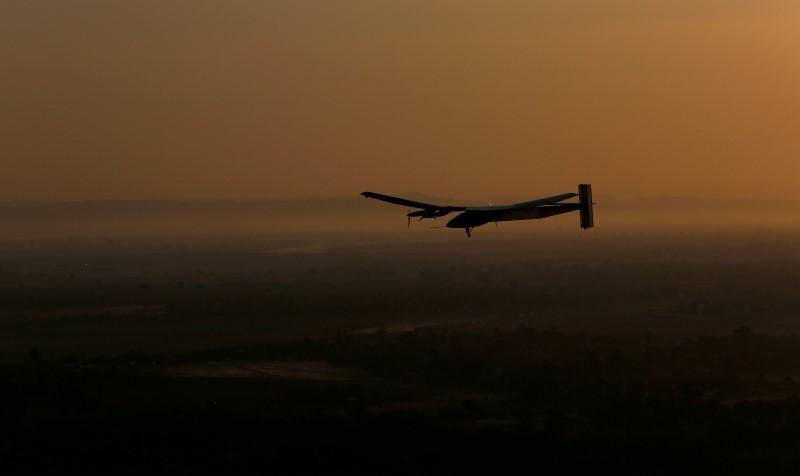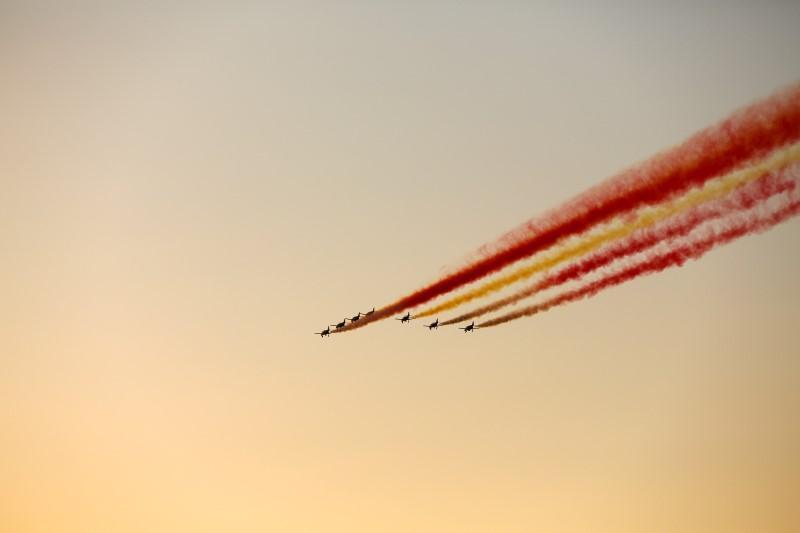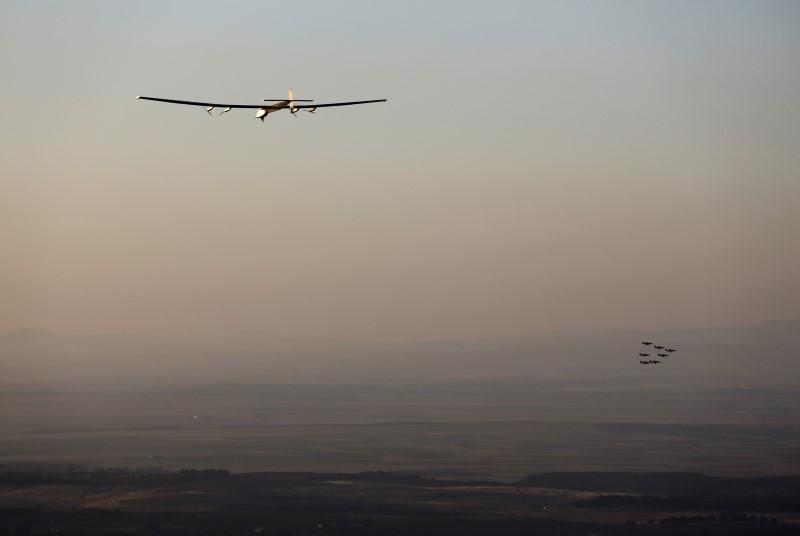An airplane powered solely by the sun landed safely in Seville in Spain early today after an almost three-day flight across the Atlantic from New York in one of the longest legs of the first ever fuel-less flight around the world.
The solar-powered plane Solar Impulse 2, piloted by Swiss aviator Bertrand Piccard, is pictured before landing at San Pablo airport in Seville, southern Spain June 23, 2016. REUTERS/Marcelo del Pozo
The solar-powered plane Solar Impulse 2, piloted by Swiss aviator Bertrand Piccard, is pictured before landing at San Pablo airport in Seville, southern Spain June 23, 2016. REUTERS/Marcelo del Pozo
The single-seat Solar Impulse 2 touched down shortly after 7.30 a.m. local time in Seville after leaving John F. Kennedy International Airport at about 2.30 a.m. EDT on June 20.
Solar Impulse 2, the solar powered airplane, piloted by Swiss pioneer Bertrand Piccard prepares to land in Seville, Spain, after finishing a 70 hours flight over the Atlantic ocean, June 23, 2016. Jean Revillard/SI2/Handout via Reuters ATTENTION EDITORS – THIS IMAGE WAS PROVIDED BY A THIRD PARTY. FOR EDITORIAL USE ONLY. NO RESALES. NO ARCHIVES
The solar-powered plane Solar Impulse 2, piloted by Swiss aviator Bertrand Piccard, is pictured before landing at San Pablo airport in Seville, southern Spain June 23, 2016. REUTERS/Marcelo del Pozo
The flight of just over 71 hours was the 15th leg of the round-the-world journey by the plane piloted in turns by Swiss aviators Bertrand Piccard and Andre Borschberg.
Solar Impulse 2, the solar powered airplane, piloted by Swiss pioneer Bertrand Piccard prepares to land in Seville, Spain, after finishing a 70 hours flight over the Atlantic ocean, June 23, 2016. Jean Revillard/SI2/Handout via Reuters ATTENTION EDITORS – THIS IMAGE WAS PROVIDED BY A THIRD PARTY. FOR EDITORIAL USE ONLY. NO RESALES. NO ARCHIVES TPX IMAGES OF THE DAY
Spanish air force aerobatic team Patrulla Aguila fly for the event of the arrival of the solar-powered plane Solar Impulse 2, piloted by Swiss aviator Bertrand Piccard in Seville, southern Spain June 23, 2016. REUTERS/Marcelo del Pozo
Spanish air force aerobatic team Patrulla Aguila fly for the event of the arrival of the solar-powered plane Solar Impulse 2, piloted by Swiss aviator Bertrand Piccard in Seville, southern Spain June 23, 2016. REUTERS/Marcelo del Pozo
“Oh-la-la, absolutely perfect,” Piccard said after landing, thanking his engineering crew for their efforts.
The solar-powered plane Solar Impulse 2 (top L), piloted by Swiss aviator Bertrand Piccard, flies over Spanish air force aerobatic team Patrulla Aguila before landing at San Pablo airport in Seville, southern Spain June 23, 2016. REUTERS/Marcelo del Pozo
The solar-powered plane Solar Impulse 2, piloted by Swiss aviator Bertrand Piccard, is pictured before landing at San Pablo airport in Seville, southern Spain June 23, 2016. REUTERS/Marcelo del Pozo
With a cruising speed of around 70 kilometers an hour (43 miles per hour), similar to an average car, the plane has more than 17,0000 solar cells built in to wings with a span bigger than that of a Boeing 747.
The solar-powered plane Solar Impulse 2, piloted by Swiss aviator Bertrand Piccard, is pictured before landing at San Pablo airport in Seville, southern Spain June 23, 2016. REUTERS/Marcelo del Pozo
The solar-powered plane Solar Impulse 2, piloted by Swiss aviator Bertrand Piccard, is pictured after landing at San Pablo airport in Seville, southern Spain June 23, 2016. REUTERS/Marcelo del Pozo
Source: REUTERS
Picture Credit: REUTERS

